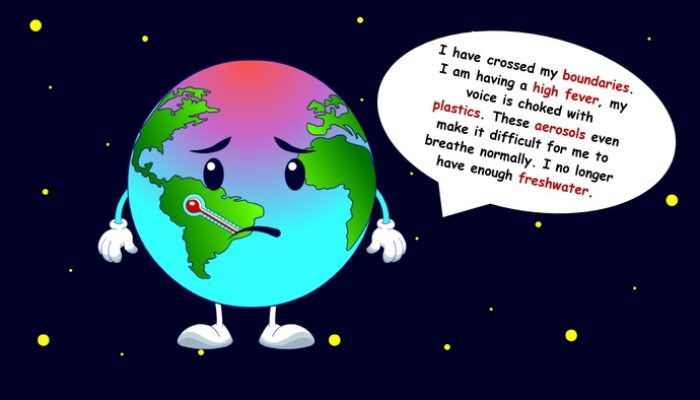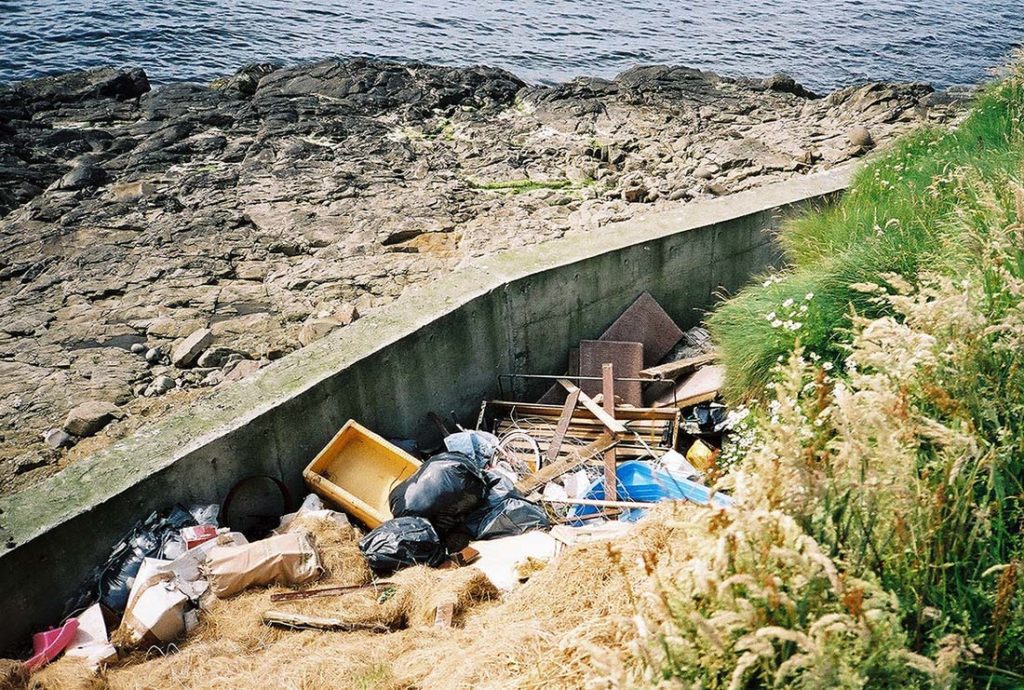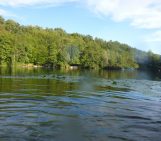
How can we determine a ‘safe operating space’ for humanity? In this week’s blog, Professor Ilan Kelman from University College London shares his thoughts about Planetary boundaries, and whether this framework will be successful for the next generations to come.

Ilan Kelman (Twitter/Instagram @ILANKELMAN) is a Professor of Disasters and Health at University College London, England, and a Professor II at the University of Agder, Kristiansand, Norway. His overall research interest is linking disasters and health, integrating climate change into both. Three main areas are (i) disaster diplomacy and health diplomacy (ii) island sustainability involving safe and healthy communities in isolated locations and (iii) risk education for health and disasters.
The planetary boundaries framework (Rockström et al. 2009ab; Steffen et al. 2015) might be useful for communicating some of humanity’s impacts on the Earth. It has captured populist imagination, hitting headlines in some journals and wider media. Challenges with the framework’s scientific robustness might undermine and distract from the fundaments of the problems we face and our possible responses.
Planetary boundaries cannot represent the full geodynamic reality of society-environment interactions. The first clue is the word ‘geodynamic’: The Earth changes and has always changed. No reason exists to expect static boundaries that can be quantitatively defined and forever obeyed.
How humans live on our planet and with the planet’s changes come from societal values. How much poverty do we want? What consumption options should each individual have? How important is life expectancy compared to the quality of life? Answers to these questions are subjective and political, leading to how much the environment and society are exploited and ruined.
Yet the planetary boundaries framework claims to delineate a ‘safe operating space’ for us by focusing on biophysical indicators—without incorporating societal indicators for how we might wish to live. If the air temperature were amenable, then we could live outdoors as hunter-gatherers. This lifestyle would not suit us all. Instead, we use resources to create artificial indoor climates that can keep a certain number of us alive irrespective of hot and cold weather. Planetary boundaries do not explore these different states of living, instead implying that a single set of numbers defines a ‘safe operating space’.
It, therefore, bypasses basic human actions and needs. Not all human beings are the same, yet the planetary boundaries framework tends toward an implicit assumption of generic people with uniform and generic interests and needs (Downing et al. 2019). No role appears in planetary boundaries for important, even if arbitrary and varying, human intangibles such as justice, equity, equality, and fairness (e.g., Downing et al. 2019; Meadows et al. 1972; Parfit 1984).
It is not even clear that planetary stability within specific confines, as implied by planetary boundaries, is a useful, feasible, and liveable aspiration. The framework’s focus on aiming for Holocene conditions neglects long-term Earth system state changes such as ice ages (Hodell 2019) while distracting from needed approaches to geologically very recent process problems such as persistent organic pollutants (Secretariat of the Stockholm Convention 2001) and plastic waste (UNEP 2022). We know how damaging this pollution is, yet no planetary boundary has been determined for it, despite attempts. Why seek a planetary boundary instead of clear, doable goals such as ‘zero single-use plastic’ and ‘zero pesticides’?
Selecting a boundary-based framework does not entirely account for previous science offering deeper and more realistic approaches. Thresholds and tipping points as espoused by planetary boundaries are present in the environment and society sometimes but are clearly absent in many situations (Hillebrand et al. 2020). Exceeding a boundary and then returning below it does not necessarily yield the same system state before and after, either in nature or in society—and after might even be better than before, obviating tipping points.
Meanwhile, long-standing concepts—with their own legitimate critics—proffer more for action. ‘Carrying capacity’ (e.g., Cohen 1995, 1996; Rees 1996) suggests that total resource use, namely the number of people multiplied by the average resource per person, cannot exceed a maximum (interpretable as a planetary boundary). Any combination below that maximum would ostensibly provide a ‘safe operating space’—although “Safe for whom?” remains the question regarding equality and equity. ‘Creeping environmental problems/changes’ (e.g., Glantz 1994, 1999) are small shifts that eventually sum to significant difficulties, apparent only when a threshold (interpretable as a tipping point) is passed, at which point it is usually too late. ‘Overshoot’ (Catton, Jr. 1982) is humans consuming faster than the environment can assimilate or regenerate.
‘Carrying capacity’, ‘creeping environmental problems/changes’, and ‘overshoot’, within their own overlaps, enmesh society and the environment to indicate policy and practice options, which ought to be judged according to criteria such as fairness, justice, equality, and equity. The planetary boundaries framework does provide this extent of interlacing. The other three pre-date planetary boundaries, yet the basics from them are not used in, and they are barely acknowledged by, the framework.
One strong advantage of the other approaches, and of considering people’s heterogeneous needs, is that multiple spatial and temporal scales can be examined simultaneously. Global analyses and actions are as important as local ones, alongside those in between. Carrying capacities, creeping environmental problems/changes, overshoots, and people’s differing needs can be scrutinised at multiple spatial scales simultaneously to aim for multi-scalar action. Planetary boundaries explicitly struggle with downscaling while attempts at spatial disaggregation have not succeeded.
Moreover, much action can and should be initiated immediately without neglecting activities over the coming centuries and millennia—particularly for when the Earth’s orbital cycles take us out of Holocene conditions, as must happen (Hoddell 2019). If we accept planetary boundaries, then the policy might aim for geoengineering to keep the Earth within Holocene conditions.
Adopting broader, deeper, more accurate, and more enduring approaches than planetary boundaries highlight societal needs within all environmental conditions while melding scales. It opens up a slew of possible policies and actions to ensure a better humanity and planet now and long into the future.
References Catton, W. R., Jr. (1982). Overshoot: The Ecological Basis of Revolutionary Change. University of Illinois Press, Urbana and Chicago. Cohen, J. E. (1995). Population Growth and Earth's Human Carrying Capacity. Science, 269 (5222), 341-346. Cohen, J. E. (1996). How Many People Can the Earth Support? W. W. Norton & Company, New York. Downing, A. S., Bhowmik, A., Collste, D., Cornell, S. E., Donges, J., Fetzer, I., Häyhä, T., Hinton, J., Lade, S., & Mooij, W. M. (2019). Matching scope, purpose and uses of planetary boundaries science. Environmental Research Letters, 14, article 073005. Glantz, M. H. (1994). Creeping environmental problems. The World & I, June, 218-225. Glantz, M. H. (1999). Creeping environmental problems and sustainable development in the Aral Sea basin. Cambridge University Press, Cambridge. Hillebrand, H., Donohue, I., Harpole, W. S., Hodapp, D., Kucera, M., Lewandowska, A. M., Merder, J., Montoya, J. M., & Freund, J. A. (2020). Thresholds for ecological responses to global change do not emerge from empirical data. Nature Ecology & Evolution, 4, 1502-1509. Hodell, D. A. (2019). The smoking gun of the ice ages. Science, 354, 1235-1236. Meadows, D. H., Meadows, D. L., Randers, J., & Behrens III, W. W. (1972). The limits to growth. Universe Books, New York. Parfit, D. (1984). Reasons and persons. Oxford University Press, Oxford. Rees, W. E. (1996). Revisiting carrying capacity: Area-based indicators of sustainability. Population and Environment, 17, 195-215. Rockström, J., Steffen, W., Noone, K., Persson, Å., Chapin III, F. S., Lambin, E. F., Lenton, T. M., Scheffer, M., Folke, C., Schellnhuber, H. J., Nykvist, B., de Wit, C. A., Hughes, T., van der Leeuw, S., Rodhe, H., Sörlin, S., Snyder, P. K., Costanza, R., Svedin, U., Falkenmark, M., Karlberg, L., Corell, R. W., Fabry, V. J., Hansen, J., Walker, B., Liverman, D., Richardson, K., Crutzen, P., & Foley, J. A. (2009a). A safe operating space for humanity. Nature, 461, 472-475. Rockström, J., Steffen, W., Noone, K., Persson, Å., Chapin III, F. S., Lambin, E. F., Lenton, T. M., Scheffer, M., Folke, C., Schellnhuber, H. J., Nykvist, B., de Wit, C. A., Hughes, T., van der Leeuw, S., Rodhe, H., Sörlin, S., Snyder, P. K., Costanza, R., Svedin, U., Falkenmark, M., Karlberg, L., Corell, R. W., Fabry, V. J., Hansen, J., Walker, B., Liverman, D., Richardson, K., Crutzen, P., and Foley, J. A. (2009b). Planetary boundaries: exploring the safe operating space for humanity. Ecology and Society, 14, article 32. Steffen, W., Richardson, K., Rockström, J., Cornell, S. E., Fetzer, I., Bennett, E. M., Biggs, R., Carpenter, S. R., de Vries, W., de Wit, C.A., Folke, C., Gerten, D., Heinke, J., Mace, G. M., Persson, L. M., Ramanathan, V., Reyers, B., and Sörlin, S. (2015). Planetary boundaries: guiding human development on a changing planet. Science, 347, article 1259855. Secretariat of the Stockholm Convention (2001, revised 2019). Stockholm Convention on Persistent Organic Pollutants (POPs). Stockholm. UNEP (2022). Resolution adopted by the United Nations Environment Assembly on 2 March 2022: End plastic pollution: towards an international legally binding instrument. United Nations Environment Assembly of the United Nations Environment Programme (UNEP), Nairobi.





